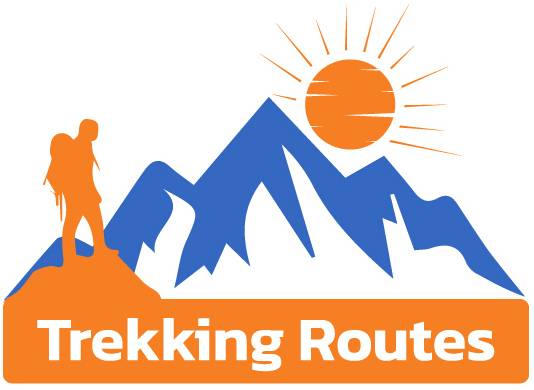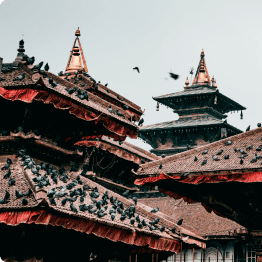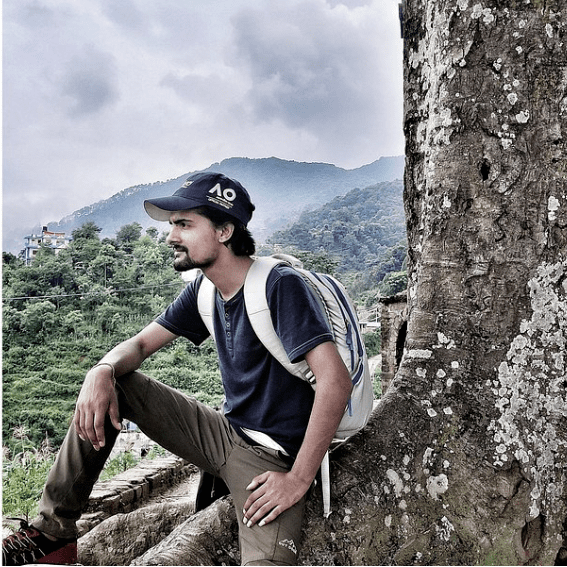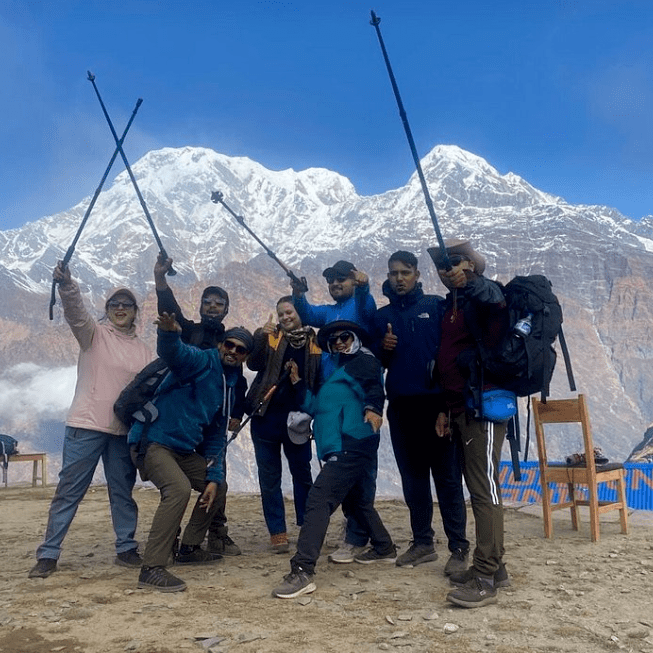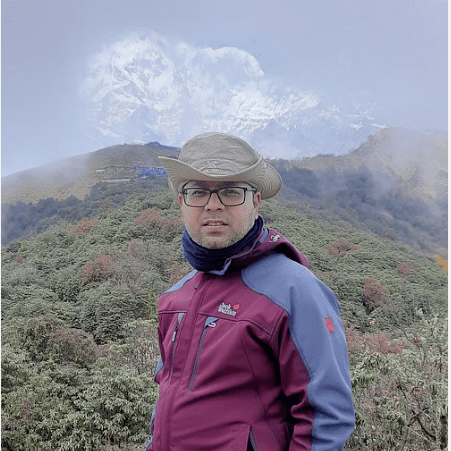The Manaslu – Tsum Valley Trek
Good To Know
-
Duration 20 Days
-
Activity Trekking
-
Difficulty Type Moderate
-
Best Season Spring & Autumn
-
Max. Altitude 5160m
-
Accommodation Tea House
-
Meal 3 Meal A day
-
Trip Starts Kathmandu
Experience Nepal’s awe-inspiring beauty and rich cultural heritage with the Manaslu-Tsum Valley Trek. This exhilarating adventure takes you off the beaten path to explore remote mountain landscapes and ancient monasteries. This 20-day journey offers a perfect blend of natural wonders and cultural immersion, providing a truly unforgettable experience for trekking enthusiasts.
Your adventure begins in Kathmandu, where you’ll be greeted by the bustling energy of the capital city before embarking on a scenic bus journey to Machha Khola. As you wind through lush forests and terraced fields, each day brings discoveries and breathtaking vistas, from the tranquil villages of Jagat and Lokpa to the spiritual sanctuary of Chumling.
Immerse yourself in the rich tapestry of local culture as you visit ancient monasteries such as Rachen Gompa and Mu Gumpa, where devoted monks still practise centuries-old traditions. Witness the vibrant prayer flags fluttering in the mountain breeze and soak in the serene ambience of these sacred sites.
The highlight of the trek is crossing the formidable Larkya La Pass, a challenging yet rewarding ascent that offers panoramic views of snow-capped peaks and rugged valleys below. At an altitude of 5160 meters, this mountain pass tests your endurance and determination, but the sense of accomplishment upon reaching the summit is unparalleled.
After conquering the pass, descend into the tranquil village of Bimthang, where pristine alpine meadows and crystal-clear glacial lakes’ll surround you. Take time to rest and rejuvenate amidst the serene beauty of this remote mountain paradise before continuing your journey back to Kathmandu.
As you bid farewell to the majestic landscapes of the Manaslu and Tsum Valley region, take with you memories that will last a lifetime and a newfound appreciation for the wonders of the Himalayas. Whether you’re a seasoned trekker or a first-time adventurer, this epic journey promises an unforgettable experience that will leave you longing to return to Nepal again and again.
Trek Difficulty of Manaslu-Tsum Valley Trek:
The Manaslu-Tsum Valley Trek presents a moderate to challenging difficulty, suitable for experienced trekkers looking for a thrilling adventure amidst remote mountain landscapes. While the trek does not require technical climbing skills, it involves long hiking days, steep ascents and descents, and high-altitude terrain. Trekkers should be prepared for rugged trails and variable weather conditions. The potential for altitude-related challenges.
Proper acclimatization and physical fitness are essential for tackling the altitude gains and demanding terrain of the trek. Trekkers should be comfortable walking for extended periods each day and be prepared for the physical exertion required to navigate mountain passes and steep inclines. With careful preparation, adequate rest, and a gradual ascent, trekkers can overcome the challenges of the Manaslu-Tsum Valley Trek and fully immerse themselves in the breathtaking beauty of the Himalayas.
Benefits of the Trek:
Despite its challenges, the Manaslu-Tsum Valley Trek offers a multitude of rewards for those willing to embark on this epic adventure. One of the primary benefits is the opportunity to explore pristine natural landscapes and remote cultural sites that are off the beaten path. Away from the crowds of more popular trekking routes, trekkers can experience the unspoiled beauty of the Himalayas and connect with the local communities of the Manaslu and Tsum Valley region.
Additionally, the trek provides a unique cultural immersion experience, allowing trekkers to interact with indigenous communities, visit ancient monasteries, and witness traditional customs and rituals firsthand. From the vibrant prayer flags fluttering in the mountain breeze to the warm hospitality of local villagers. Every moment of the trek is infused with the rich cultural heritage of Nepal. Moreover, the sense of accomplishment upon reaching the summit of Larkya La Pass and taking in panoramic views of the surrounding peaks is unmatched, leaving trekkers with memories that will last a lifetime.
A day in the Manaslu-Tsum Valley Trek
As the sun paints the sky with hues of orange and pink, signalling the dawn of a new day in the tranquil Himalayan landscape, trekkers awaken to the gentle rustling of leaves and the distant chirping of birds. Emerging from their cosy sleeping bags, where the crisp mountain air and the promise of another day of adventure greet them. After a hearty breakfast of oatmeal, toast, and hot tea served by the friendly lodge hosts, trekkers gather their gear and set off on the trail.
The day’s trekking route unfolds before them. It is a winding path leading through dense rhododendrons and pine forests, across babbling streams and roaring rivers, and past quaint villages amidst terraced hillsides. Along the way, they pause to admire the breathtaking vistas of snow-capped peaks looming majestically against the azure sky and to catch their breath as they ascend steep inclines. The rhythm of their footsteps is accompanied by the soothing sounds of nature – the gurgle of streams, the whisper of the wind through the trees, and the occasional call of a distant bird.
As midday approaches, trekkers find a scenic spot to rest and refuel, unpacking their lunch of sandwiches, fruits, and energy bars while soaking in the panoramic views stretching before them. Energized and rejuvenated, they resume their journey, eager to explore the wonders that await around each bend in the trail. The afternoon brings new challenges and rewards. A challenging ascent to a high mountain pass, a chance encounter with a friendly yak herder, and a refreshing dip in a crystal-clear mountain stream. As the sun begins to dip below the horizon, casting long shadows across the landscape, trekkers reach their destination for the night. A cosy teahouse or lodge where they can unwind, share stories of the day’s adventures, and rest their weary bodies in preparation for the journey ahead.
Highlights:
Traverse the rugged terrain and conquer the challenging Larkya La Pass, offering panoramic views of the majestic Himalayas.
- Enjoy the vibrant local culture as you visit remote villages along the trail. Where warm hospitality and ancient traditions await.
- Discover the region’s spiritual heritage as you explore revered Buddhist sites like Rachen Gompa and Mu Gumpa, steeped in centuries of history and mystique.
- Lose yourself in nature’s serene beauty, from lush forests and cascading waterfalls to expansive alpine meadows that paint the landscape with vibrant hues.
- Engage with the friendly locals who call these mountains home, sharing stories and insights into their way of life as you journey through their homeland.
- Keep your eyes peeled for glimpses of Himalayan wildlife, from elusive snow leopards to graceful blue sheep. Which will add an element of excitement to your trek.
- Escape the hustle and bustle of city life as you venture into remote areas of the Himalayas. Where peace and tranquillity reign supreme.
- Let your spirit soar as you soak in the awe-inspiring vistas of towering peaks and rolling hillsides. It offers a visual feast at every turn.
- Immerse yourself in the rich tapestry of Nepalese culture and traditions, forging unforgettable memories on this authentic Himalayan adventure.
Itinerary
-
Accommodation 3 Star Hotel
-
Max Altitude 1400m
-
Meal Breakfast
Upon your arrival at Tribhuvan International Airport in Kathmandu, you’ll be warmly welcomed by our team and transferred to your hotel. Take some time to rest and acclimatize to the altitude. Explore the vibrant streets of Kathmandu, visiting iconic landmarks such as Boudhanath Stupa and Pashupatinath Temple.
-
Accommodation 3 star Hotel
-
Max Altitude 1400m
-
Meal breakfast
Today, you’ll have a full day in Kathmandu to finalize your trekking preparations. Meet with your guide and fellow trekkers for a detailed briefing about the trekking route, safety precautions, and equipment requirements. Visit the Kathmandu Durbar Square, a UNESCO World Heritage Site, to marvel at its ancient architecture and rich cultural heritage.
-
Accommodation Tea House
-
Max Altitude 870m
-
Meal 3 Meal a Day
After an early breakfast, you’ll embark on a scenic drive from Kathmandu to Machha Khola via public bus. Enjoy the picturesque landscapes and charming villages along the way as you make your way to the starting point of the trek. En route, stop at the bustling town of Gorkha to visit the historic Gorkha Durbar and learn about its significance in Nepalese history.
-
Accommodation Tea House
-
Max Altitude 1290m
-
Meal 3 meal a Day
Your trek officially begins today as you set out from Machha Khola and follow the meandering path along the Budi Gandaki River. Traverse through lush forests, terraced fields, and quaint villages as you make your way to Jagat. Along the way, you’ll encounter local villagers going about their daily lives, offering insights into rural Nepalese culture.
-
Accommodation Tea House
-
Max Altitude 2240m
-
Meal 3 meal a Day
Today’s trek takes you deeper into the Manaslu region as you ascend gradually towards Lokpa. Pass through picturesque villages inhabited by ethnic Gurung and Magar communities, known for their warm hospitality and unique cultural traditions. Enjoy stunning views of terraced fields and cascading waterfalls along the trail.
-
Accommodation Tea House
-
Max Altitude 2970m
-
Meal 3 meal a Day
Continue your journey through the picturesque Tsum Valley as you trek from Lokpa to Chumling. Pass through verdant forests, charming hamlets, and terraced farmlands, soaking in the serene ambiance of the remote Himalayan wilderness. Visit the ancient Buddhist monasteries of Chhokangparo and explore their sacred relics and intricate murals.
-
Accommodation Tea house
-
Max Altitude 3240m
-
Meal 3 Meal a Day
Today’s trek takes you to the sacred Rachen Gompa, a beautiful monastery nestled amidst the rugged mountains of the Tsum Valley. Explore the monastery grounds, adorned with colorful prayer flags and intricate Buddhist artwork. Attend a prayer ceremony led by the resident monks and immerse yourself in the spiritual ambiance of the monastery.
-
Accommodation Tea House
-
Max Altitude 3700m
-
Meal 3 Meal a Day
Embark on a challenging trek from Rachen Gompa to Nile and continue up to Mu Gumpa, a remote monastery perched high above the valley. Take in breathtaking views of the surrounding mountains and spend the night in the tranquil village of Nile. Visit the ancient Mu Gumpa monastery, a spiritual sanctuary for Tibetan Buddhist practitioners, and participate in meditation sessions led by resident monks.
-
Accommodation Tea House
-
Max Altitude 2970m
-
Meal 3 Meal a Day
After breakfast, retrace your steps back to Chumling, enjoying the panoramic views of the Himalayan peaks and lush valleys along the way. Arrive in Chumling and relax in the serene atmosphere of the village. Explore the local market and interact with villagers to learn about their traditional way of life.
-
Accommodation Tea House
-
Max Altitude 1860m
-
Meal 3 Meal a Day
Today, you’ll descend from Chumling to Deng, passing through verdant forests and quaint villages dotted along the trail. Marvel at the natural beauty of the Manaslu region as you make your way towards Deng, a charming village nestled in a picturesque valley. Visit the ancient Buddhist stupa of Chorten Tharpu and offer prayers for good fortune and safe travels.
-
Accommodation Tea House
-
Max Altitude 2660m
-
Meal 3 Meal a Day
Continue your trek towards Namrung, trekking through rugged terrain and dense forests. As you gain altitude, you’ll be rewarded with stunning views of snow-capped peaks and pristine landscapes. Pass through the traditional Tibetan village of Bihi and witness the daily activities of local farmers and herders.
-
Accommodation Tea House
-
Max Altitude 3180m
-
Meal 3 Meal a Day
Today’s trek takes you to the village of Lho, known for its traditional Tibetan architecture and panoramic mountain views. Explore the village and visit the ancient monasteries that dot the landscape. Attend a cultural performance featuring traditional Tibetan music and dance, performed by local artists.
-
Accommodation Tea House
-
Max Altitude 3530m
-
Meal 3 Meal a Day
Continue your journey to Samagaon, a charming village nestled beneath the towering peaks of the Manaslu range. Enjoy the tranquility of the village and take in the breathtaking views of the surrounding mountains. Visit the revered Pungyen Gompa monastery, perched on a hilltop overlooking the village, and receive blessings from the resident lamas.
-
Accommodation Tea House
-
Max Altitude 3690m
-
Meal 3 Meal a Day
Today’s trek takes you to the village of Samdo, located near the Tibetan border. As you trek through alpine meadows and rocky terrain, keep an eye out for wildlife such as blue sheep and Himalayan marmots. Arrive in Samdo and explore the village, interacting with local villagers and learning about their traditional way of life.
-
Accommodation Tea House
-
Max Altitude 3690m
-
Meal 3 Meal a Day
Take a rest day in Samdo to acclimatize to the altitude and prepare for the challenging days ahead. Explore the surrounding area and visit nearby monasteries and viewpoints for stunning Himalayan vistas. Attend a traditional puja ceremony at the local monastery, presided over by the resident lamas, and receive blessings for a safe and successful journey.
-
Accommodation Tea House
-
Max Altitude 4470m
-
Meal 3 Meal a day
Embark on a steep ascent to Larkya Phedi, the base camp for crossing the Larkya La Pass. Along the way, you’ll traverse rocky terrain and cross glacial streams, with breathtaking views of the surrounding peaks. Arrive at Larkya Phedi and rest for the night, preparing for the challenging ascent to the pass tomorrow.
-
Accommodation Tea House
-
Max Altitude 5106m
-
Meal 3 Meal a Day
Today is the most challenging day of the trek as you cross the high-altitude Larkya La Pass at 5160 meters. Enjoy panoramic views of the Himalayas before descending to the village of Bimthang, where you’ll spend the night. Explore the picturesque village and relax amidst the tranquil mountain scenery.
-
Accommodation Tea House
-
Max Altitude 1860
-
Meal 3 Meal a day
Descend from Bimthang to Dharapani, passing through lush forests, alpine meadows, and quaint villages along the way. Take in the stunning mountain scenery as you make your way towards the final days of the trek. Arrive in Dharapani and celebrate the completion of your trek with your fellow trekkers.
-
Accommodation 3 star Hotel
-
Max Altitude 1400
-
Meal Breakfast
After breakfast, you’ll drive back to Kathmandu via Besi Sahar from Dharapani. Enjoy the scenic journey through rural Nepal, passing through picturesque villages and terraced fields. Upon arrival in Kathmandu, check into your hotel and unwind after your adventurous journey.
-
Accommodation
-
Max Altitude
-
Meal Breakfast
On your final day in Nepal, you’ll have some free time to explore Kathmandu or do any last-minute shopping before being transferred to Tribhuvan International Airport for your onward journey. Reflect on your incredible trekking experience in the Manaslu-Tsum Valley region and cherish the memories of your Himalayan adventure.
Inclusions/Exclusions
What's Included
- Airport pickup and drop by private vehicle for your convenience and comfort.
- Accommodation in Kathmandu for 3 nights on a bed and breakfast basis, ensuring a comfortable stay before and after your trek.
- All necessary permits, including the Annapurna Conservation Area Permit (ACAP), Manaslu Conservation Area Permit (MCAP), Manaslu Restricted Area Permit, and Tsum Valley Special Permit, allowing you to explore the designated trekking areas.
- Trekking gear rental, including a duffel bag, sleeping bag, and down jacket, provided to ensure your comfort and warmth during the trek. These items are refundable upon completion of the trek.
- Experienced and eco-trained English-speaking trekking guide equipped with a comprehensive medical kit, ensuring your safety and well-being throughout the journey.
- Full-board accommodation during the trek, with lodging arranged in local lodges or tea houses for a traditional Nepalese experience.
- Three meals a day (breakfast, lunch, and dinner) during the trek, prepared with fresh and locally sourced ingredients to keep you energized and nourished.
- Public bus transportation from Kathmandu to Machha Khola, providing a convenient and cost-effective way to reach the starting point of the trek.
- Shared jeep transportation from Dharapani to Besi Sahar, followed by a public bus journey back to Kathmandu, ensuring hassle-free travel arrangements.
- Tourist service charge and VAT included in the package for your convenience.
- Farewell dinner in Kathmandu, allowing you to celebrate the successful completion of your trek with your fellow trekkers.
What's Excluded
- International airfare, travel insurance, and Nepal visa fees are not included in the package and should be arranged separately.
- Lunch and dinner in Kathmandu, except for the farewell dinner, giving you the flexibility to explore local cuisine at your leisure.
- Additional porter services are available upon request at an extra cost of USD 360 per porter. Each porter can carry a maximum of 25 kg, and it is recommended to share one porter between two trekkers for efficient luggage handling.
- Private jeep transportation from Kathmandu to the trek starting point and from the trek endpoint back to Kathmandu is available at an additional cost of USD 450 per jeep for both sides. Each jeep can accommodate a maximum of six people, offering a convenient and comfortable travel option.
- Personal nature expenses such as beverages, hot showers, donations, and shopping are not included in the package and should be budgeted separately.
- Tips for staff, including guides, porters, and support staff, are not included but are expected at the end of the trek as a gesture of appreciation for their hard work and dedication.
Trip Map
Tsum Valley Trek Map
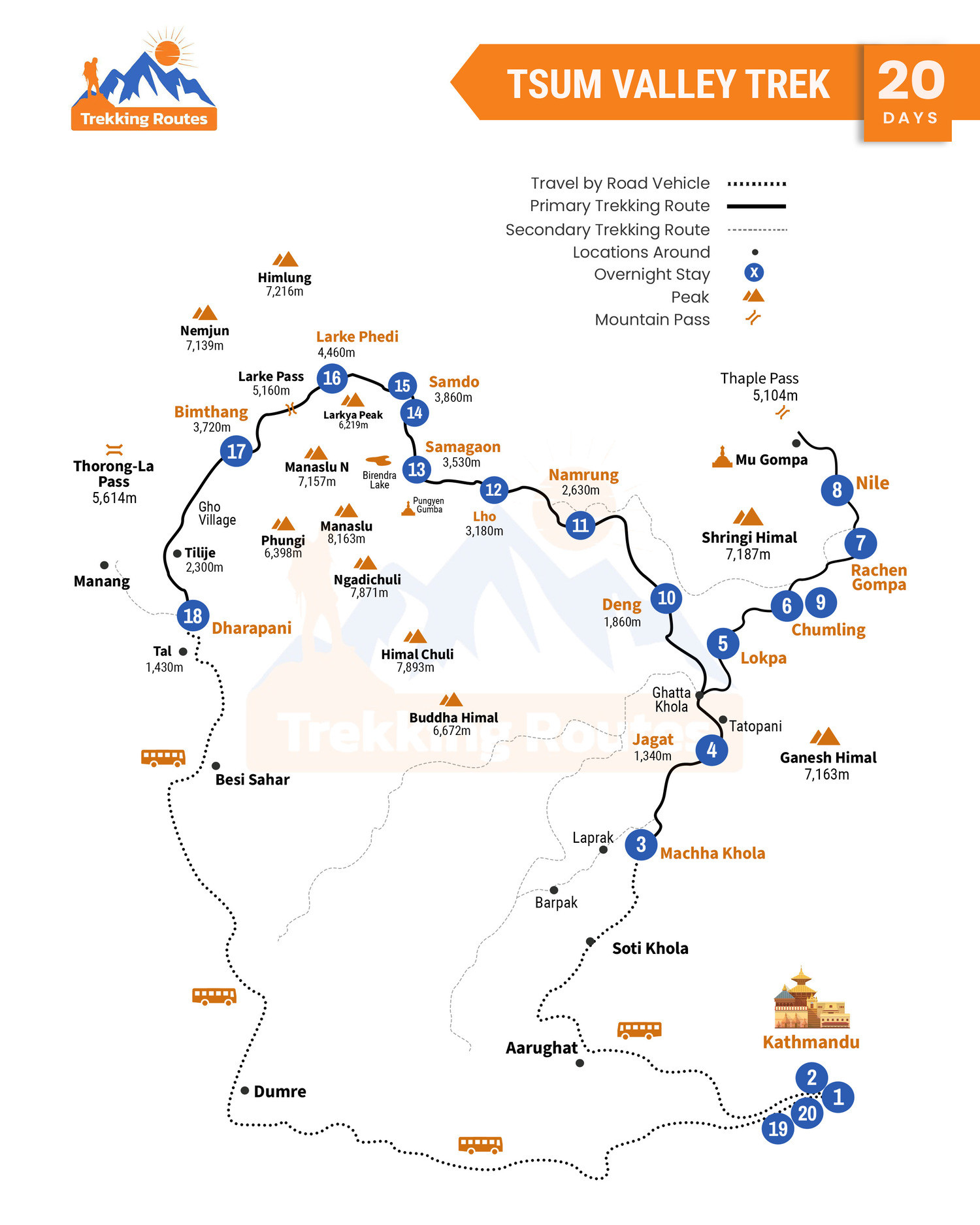
The Manaslu – Tsum Valley Trek Essential Info
Permits and Entry Requirements:
Trekkers planning to embark on the Manaslu-Tsum Valley trek must ensure they have obtained all necessary permits and met entry requirements. These include the Annapurna Conservation Area Permit (ACAP), Manaslu Conservation Area Permit (MCAP), Manaslu Restricted Area Permit, and Tsum Valley Special Permit. These permits are essential for trekking in the designated conservation areas and restricted regions. Typically, trekking agencies or guides assist in obtaining these permits, but trekkers must carry them throughout the journey to present at checkpoints along the trail.
Physical Fitness:
The Manaslu-Tsum Valley trek is renowned for its challenging terrain and high altitude. Trekkers should be in good physical condition and undertake adequate training before embarking on the trek. Training should include cardiovascular exercises, strength training, and hiking to build endurance and strength. Additionally, trekkers should gradually increase their fitness level in the weeks leading up to the trek to prepare their bodies for the rigors of trekking at high altitudes.
Altitude Sickness:
Altitude sickness, also known as acute mountain sickness (AMS), is a common concern for trekkers ascending to high altitudes. Symptoms of altitude sickness include headache, nausea, fatigue, and dizziness. It’s essential for trekkers to acclimatize properly by ascending gradually, staying hydrated, and taking rest days to allow their bodies to adjust to the altitude. Trekkers should be aware of the symptoms of altitude sickness and know when to seek medical assistance if symptoms worsen.
Accommodation and Meals:
Accommodation during the Manaslu-Tsum Valley trek is primarily in teahouses or lodges located along the trail. These teahouses offer basic amenities such as beds, blankets, and shared bathroom facilities. While the accommodation is rustic, it provides trekkers with a comfortable place to rest after a day of trekking. Meals served at teahouses typically consist of traditional Nepali dishes such as dal bhat (rice and lentils), noodles, soups, and vegetables. Trekkers should be prepared for simple yet hearty meals that provide the necessary energy for trekking.
Weather and Climate:
The weather in the Manaslu-Tsum Valley region can vary significantly depending on the season and altitude. Trekkers should be prepared for a range of weather conditions, including hot and sunny days, cold nights, and the possibility of rain or snowfall, especially at higher elevations. It’s essential to pack appropriate clothing layers to stay warm and dry, including thermal base layers, fleece jackets, waterproof outer layers, and insulated gloves and hats.
Safety and Emergency Procedures:
Safety is paramount during the Manaslu-Tsum Valley trek, and trekkers should familiarize themselves with emergency procedures and safety protocols before setting out on the trail. Trekking with a certified guide who is trained in wilderness first aid is highly recommended, as they can provide assistance in case of emergencies. Trekkers should also carry a basic first aid kit with essential supplies such as bandages, antiseptic wipes, pain relievers, and blister treatment.
Responsible Trekking Practices:
As with any trekking adventure, it’s important for trekkers to practice responsible trekking to minimize their impact on the environment and support local communities. This includes adhering to designated trekking trails, disposing of waste properly, respecting local customs and traditions, and supporting sustainable tourism initiatives. By following responsible trekking practices, trekkers can help preserve the natural beauty of the Manaslu-Tsum Valley region for future generations to enjoy.
Equipment and Gear:
When preparing for the Manaslu-Tsum Valley trek, trekkers should ensure they have the necessary equipment and gear to ensure a safe and comfortable journey. Here’s a list of essential trekking gear:
- Sturdy hiking boots with ankle support
- Lightweight and breathable trekking pants
- Moisture-wicking base layers
- Insulating mid-layers such as fleece jackets or down vests
- Waterproof and windproof outer layers (jacket and pants)
- Warm hat and gloves
- Sunglasses with UV protection
- Sunscreen and lip balm with SPF
- Trekking poles for added stability and support
- Headlamp or flashlight with extra batteries
- Sleeping bag rated for cold temperatures
- Daypack for carrying essentials during the day
- Water purification tablets or filtration system
- Personal toiletries and hygiene products
- Basic first aid kit with medications and supplies
By ensuring they have the appropriate equipment and gear, trekkers can enjoy a safe and successful journey through the stunning landscapes of the Manaslu-Tsum Valley region.
FAQs
The best time to trek in the Manaslu-Tsum Valley region is during the spring (March to May) and autumn (September to November) seasons when the weather is mild, and the skies are clear, offering stunning views of the Himalayas.
Trekkers need permits such as the Annapurna Conservation Area Permit (ACAP), Manaslu Conservation Area Permit (MCAP), Manaslu Restricted Area Permit, and Tsum Valley Special Permit to trek in the region. These permits are arranged by trekking agencies or guides.
Yes, altitude sickness, or acute mountain sickness (AMS), can be a concern during the Manaslu-Tsum Valley trek due to the high elevations. Trekkers should acclimatize properly, stay hydrated, and be aware of symptoms such as headache and nausea.
The Manaslu-Tsum Valley trek is considered moderately challenging, with a mix of ascents, descents, and high-altitude passes. Trekkers should have a good level of fitness and be prepared for long days of hiking.
The Manaslu-Tsum Valley trek typically takes around 17 to 20 days to complete, depending on the chosen itinerary and trekking pace.
Yes, there are teahouses and lodges available for accommodation along the Manaslu-Tsum Valley trekking route. These establishments offer basic amenities such as beds, meals, and shared bathroom facilities.
The trek involves significant elevation gain, with the highest point being the Larkya La Pass at 5,160 meters above sea level. Trekkers should be prepared for varying altitudes throughout the journey.
There are no specific age restrictions for the Manaslu-Tsum Valley trek, but participants should be in good physical condition and prepared for the challenges of high-altitude trekking.
While hiring a guide and porter is not mandatory, it is highly recommended for safety and support, especially for those unfamiliar with the terrain and altitude.
Accommodation options along the trekking route include teahouses, lodges, and guesthouses, which provide basic amenities such as beds, meals, and shared bathroom facilities.
ATM facilities are limited along the Manaslu-Tsum Valley trekking route, so it's advisable to carry enough cash in Nepali rupees to cover expenses during the trek.
The main highlights of the Manaslu-Tsum Valley trek include breathtaking mountain views, remote Himalayan villages, Buddhist monasteries, and cultural encounters with local communities.
While it is possible to do the trek independently, it is recommended to go with a reputable trekking agency or guide for safety, navigation, and support services.
There are no specific age restrictions for the Manaslu-Tsum Valley trek, but participants should be in good physical condition and prepared for the challenges of high-altitude trekking.
Transportation options to reach the trek starting point vary, but typically include private or public buses from Kathmandu to Soti Khola or Arughat, depending on the chosen itinerary.
